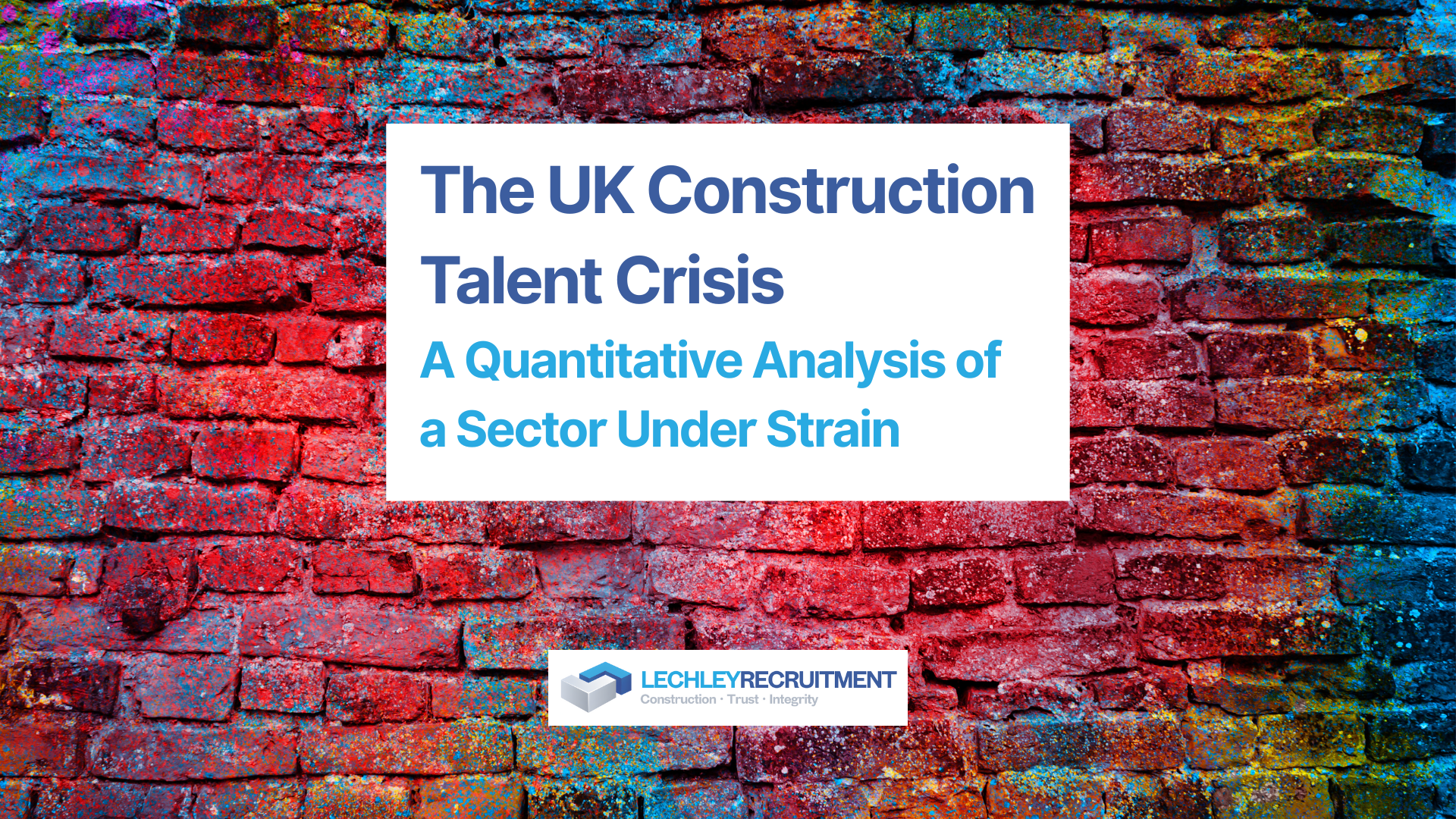Crafting the Perfect Job Description: A Guide for the Architectural and Design Industries
Crafting the Perfect Job Description: A Guide for the Architectural and Design Industries
The quest for talent remains a pivotal challenge in the ever-evolving landscape of architecture and design. The essence of a well-crafted job description transcends mere words on a page; it's about capturing the spirit of a role, the ethos of a company, and the vision of an industry. Drawing from years of experience in construction and recruitment, I've observed the transformative power of effectively communicated opportunities. This article delves into the art and science of writing job descriptions tailored for the architectural and design industries, infused with insights and a nuanced understanding of what makes these fields unique.
The Dos and Don'ts of Job Description Craftsmanship
Crafting a job description that resonates with the desired audience begins with understanding the fundamental dos and don'ts. Specificity is your ally. Detailing the role, responsibilities, and how it fits into the larger project tapestry ensures clarity. It's about painting a vivid picture of daily tasks while highlighting the skills that will bring them to life. Essential skills, particularly technical proficiencies such as CAD or BIM software knowledge, are non-negotiable in our industry, yet soft skills - the ability to collaborate, communicate, and innovate - are equally paramount.
Inclusivity cannot be overstated. Architectural and design fields thrive on diversity of thought and perspective. A job description should be a beacon for talent from all walks of life, avoiding industry jargon that gates knowledge rather than sharing it. Moreover, the clarity of the application process removes barriers, making the opportunity accessible to all who aspire to it.
Yet, the pitfalls of job description writing are many. Overloading potential candidates with information or unrealistic expectations can deter even the most enthusiastic applicants. Whether direct or inadvertent, discrimination is a barrier to building the diverse and dynamic teams that drive our industry forward. Avoiding jargon and unnecessary requirements ensures the door is open to all capable and creative minds.
Pondering the Questions
The journey to a compelling job description involves introspection and inquiry. What are the role's essential functions? This question isn't just about listing tasks; it's about understanding the impact of these tasks on projects and the company at large. The skills and experience required should be carefully considered, distinguishing between the essential and the desirable to cast a wider net for potential talent.
Understanding the company culture is crucial. The architectural and design industries are not just about the work produced but the environments in which this work is created. Who the candidate will report to and the team structure provides a glimpse into the company's operational heartbeat, while growth opportunities highlight the company's investment in its people.
Enhancing the Attractiveness of Job Descriptions
A job description must go beyond the basics to attract the best in the industry. Mentioning specific projects offers candidates a tangible connection to their potential future. Describing the role's contribution to success, the learning opportunities available, and the team's achievements and philosophies adds depth and dimension. It's about creating a narrative that resonates with the aspirations and values of top-tier candidates.
A Personal Perspective
Drawing from personal experience, the distinction between a standard job description and one that truly speaks to candidates is palpable. Passion, creativity, and a commitment to excellence are the lifeblood of success in the architectural and design sectors. A job description that encapsulates these elements, crafted with care and deep industry understanding, is a powerful tool in the quest for talent.
Reflecting on my time in construction and recruitment, I've seen the impact of a well-crafted job description firsthand. It's not just about filling a vacancy but inviting someone to contribute to a legacy. Whether it’s architects who envision the future through their designs or designers whose creativity knows no bounds, the job description is the first step in a journey of collaboration and innovation.
The role of project managers in these industries is particularly close to my heart, embodying the bridge between vision and reality. A job description for such roles should illuminate the complexities and rewards of bringing projects from conception to completion, highlighting the skills and temperament required to navigate this challenging yet rewarding path.
Crafting with Passion
In conclusion, writing a job description for the architectural and design industries is an exercise in storytelling. It's about conveying the passion, precision, and potential that define these fields. One can craft a job description that attracts and inspires by adhering to the dos and don’ts, contemplating the critical questions, and injecting personal insights and industry understanding.
The architectural and design industries stand at the crossroads of tradition and innovation, form and function. As we seek to populate our ranks with the best and brightest, let us remember that the job description is more than a list of requirements; it is an invitation to be part of something greater. A well-crafted job description, therefore, is not just a tool for recruitment but a reflection of our commitment to excellence and diversity.
A Call to Action
Finally, a compelling job description should include a clear and inspiring call to action. This isn't just about instructing candidates on applying but inviting them to embark on a journey of professional growth and creative fulfilment. It's an opportunity to reiterate the company's commitment to innovation, excellence, and the development of its people.
If you're on the journey to find exceptional talent within the architectural and design industries and recognise the pivotal role a well-crafted job description plays in attracting the right candidates, I invite you to reach out. Whether you're seeking to fill a role that demands a unique blend of creativity, technical skill, and visionary thinking, or you're looking to refine your recruitment strategy to reflect your company’s culture and values better, I'm here to help. With a background deeply rooted in construction and a proven track record in recruitment, my expertise lies in understanding the nuances of these industries and the qualities that define their top performers. Let's collaborate to create job descriptions that capture the essence of the role and speak directly to potential candidates’ aspirations and passions. Contact me to discuss how we can elevate your recruitment process and secure the talent to drive your projects and company forward.
Job Description Outline
Introduction
Briefly introduce your company, including its mission, values, and impact on the architectural or design industry. Highlight any unique selling points that make your company an attractive workplace.
Role Summary: Provide an overview of the role, including the job title and a high-level summary of the key responsibilities and the role's importance to the company's goals.
Responsibilities
Key Duties: List the primary responsibilities of the role in bullet points. Be specific and use action verbs to convey what the candidate will be doing clearly. Include how these responsibilities contribute to larger projects and company objectives.
Projects and Tools: Mention specific projects the candidate will work on or lead, and list essential tools or software they will use. This gives potential applicants a clear idea of the practical aspects of the job.
Skills and Qualifications
Must-Have Skills: Outline the essential skills, qualifications, and experience required for the role. This section should include technical skills (e.g., proficiency in specific design software) and soft skills (e.g., communication, teamwork).
Desirable Skills: List skills and qualifications that are beneficial but not essential. This helps widen your pool of potential candidates by distinguishing between preferred and necessary qualifications.
Company Culture and Team Structure
Culture: Describe your company culture and how the role fits within this environment. Highlight any core values or principles particularly relevant to your team and work.
Team: Provide insight into the team structure, including direct reports and key collaborators. This helps candidates understand their potential place within the organisation.
Career Development
Growth Opportunities: Outline the career progression and learning opportunities in the role and company. Highlight any training programs, mentorship, or career paths that show your commitment to employee development.
Application Process
How to Apply: Give clear instructions on the application process, what to include (e.g., portfolio, CV, cover letter), and any deadlines. Mention any specific requirements or formats for submitting work samples.
Next Steps: Briefly explain the steps after application submission, such as the interview process, to manage candidates' expectations.
Conclusion and Call to Action
Closing Statement: Reiterate the exciting opportunities the role and company offer. Emphasise your company's commitment to innovation, excellence, and the development of its people.
Contact Information: Provide a point of contact for further questions or clarifications about the role or application process. Encourage candidates to apply and express your enthusiasm for welcoming new talent to your team.
This outline is a starting point for crafting job descriptions that resonate with the desired audience. By following this structure, you can create clear, engaging, and effective job descriptions that attract the best candidates in the architectural and design industries. Remember, the goal is to describe the role and showcase your company as a place where talented professionals can grow, innovate, and contribute to exciting projects.





